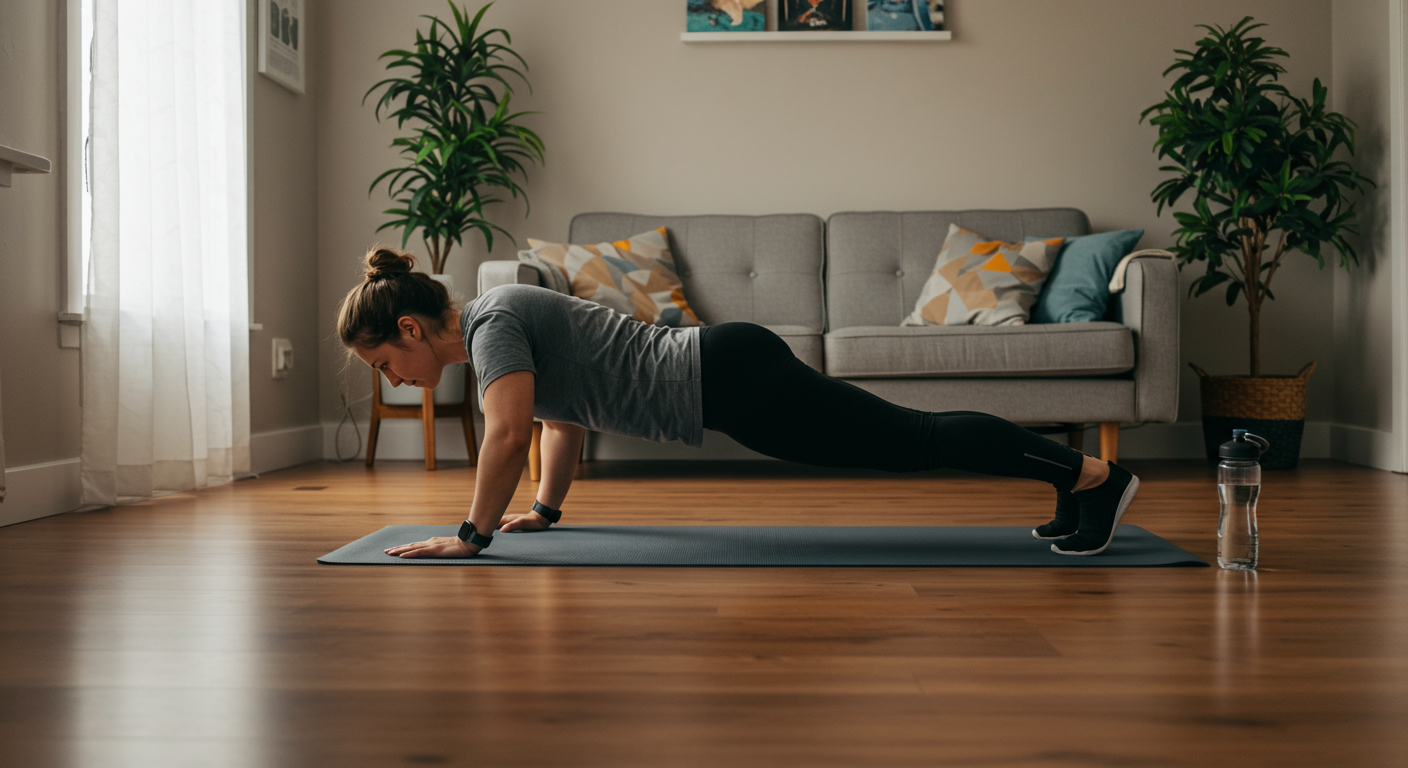Ready to sculpt a stronger core in just 15 minutes? This workout is designed for those with a base level of fitness, looking to elevate their home workout routine. This routine requires no equipment, making it perfect for busy schedules and small spaces. Get ready to feel the burn and build a solid foundation of core strength! Let's get started!

Mastering Key Techniques for This Workout
Before you begin, focus on proper form to maximize effectiveness and prevent injuries. Engage your core throughout each exercise, imagine pulling your belly button towards your spine. Control your movements, avoiding jerky motions. Breathe deeply – inhale to prepare, and exhale during the exertion phase of each exercise.
Advanced Variations and Progressions
As you get stronger, progress by increasing the reps, sets, or hold times. For example:
- Plank: Increase hold time.
- Crunches: Add a weight plate or medicine ball.
- Leg Raises: Lower your legs closer to the floor.
- Russian Twists: Add a weight or medicine ball.
- Bicycle Crunches: Increase the speed and range of motion.
Step-by-Step Instructions (detailed, with pro tips)
Follow these exercises for a quick and effective core workout:
Plank:
- Starting Position: Get into a push-up position, but rest on your forearms instead of your hands. Your elbows should be directly under your shoulders.
- Action: Keep your body in a straight line from head to heels, engaging your core to prevent your hips from sagging. Hold this position for as long as you can maintain good form.
- Pro Tip: Squeeze your glutes and quads for added stability.
Crunches:
- Starting Position: Lie on your back with your knees bent and feet flat on the floor. Place your hands behind your head, supporting your neck.
- Action: Engage your core to lift your shoulder blades off the floor, keeping your lower back pressed down. Exhale as you lift, inhale as you lower.
- Pro Tip: Focus on using your core muscles to lift, not your neck.
Leg Raises:
- Starting Position: Lie on your back with your legs extended and your hands at your sides (or under your glutes for support).
- Action: Keeping your legs straight, lift them towards the ceiling. Slowly lower them back down, engaging your core throughout the movement.
- Pro Tip: Lower your legs only as far as you can control without arching your lower back.
Russian Twists:
- Starting Position: Sit on the floor with your knees bent and feet slightly off the ground (or on the floor for beginners). Lean back slightly, engaging your core.
- Action: Twist your torso from side to side, touching the floor beside you with your hands. Keep your back straight and your core engaged.
- Pro Tip: For added intensity, hold a weight or medicine ball.
Bicycle Crunches:
- Starting Position: Lie on your back with your hands behind your head and your knees bent.
- Action: Bring your right elbow towards your left knee while extending your right leg. Alternate sides in a pedaling motion, engaging your core.
- Pro Tip: Focus on twisting your torso, not just your elbows.
Maximizing Your Results at Home
Consistency is key. Aim to perform this core workout 3-4 times per week. Adjust the number of sets and reps to match your fitness level, and don't be afraid to modify exercises as needed. Remember to listen to your body and take rest days when necessary.
Advanced Training Principles
To continually challenge your core, incorporate progressive overload. This means gradually increasing the difficulty of your workouts over time. Increase the number of reps, sets, or hold times. If you're using weights, slowly increase the weight as you get stronger. Make sure to include rest days to allow your muscles to recover.
Integrating with Your Existing Routine
This core workout is a perfect addition to any existing fitness routine. It can be done as a standalone workout, or incorporated before or after other exercises. Perform it before your cardio to get your core activated, or at the end of your workout to finish strong.
Pushing Your Limits Safely
Always warm up before each workout with 5 minutes of light cardio and dynamic stretching, such as arm circles and leg swings. Cool down after your workout with static stretching, holding each stretch for 30 seconds. Stay hydrated by drinking plenty of water before, during, and after your workout. If you experience any pain, stop the exercise immediately.
Expert-Level Home Fitness Insights
For those looking to further challenge their core, consider incorporating isometric exercises. These exercises involve holding a position for an extended period, which can help build strength and endurance. Include exercises like the hollow body hold and the side plank to target specific core muscles.